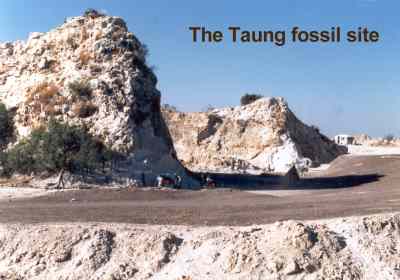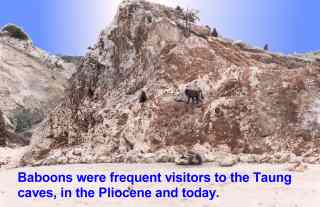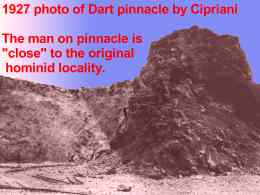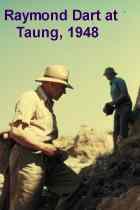McKee, J.K. 1993 The Faunal Age
of the Taung Hominid Deposit. Journal
of Human Evolution 25(5): 363-376.
McKee,
J.K. 1994 Catalogue of Fossil Sites
at the Buxton Limeworks, Taung. Palaeontologia
Africana 31: 73-81.
McKee,
J.K., and P.V. Tobias 1994 Taung
Stratigraphy and Taphonomy: Preliminary Results Based on the 1988-1993
Excavations. South African
Journal of Science 90(4): 233-235.
McKee,
J.K. 1999 The Autocatalytic Nature
of Hominid Evolution in African Plio-Pleistocene Environments. In
African Biogeography, Climate Change, and Early Human Evolution,
Eds. T.G. Bromage & F. Schrenk. New
York: Oxford University Press, pp. 57-67.
McKee,
J.K. 2001 The Taung raptor
hypothesis: Caveats and new evidence. American
Journal of Physical Anthropology Supp. 32: 107.
McKee, J.K. 2010. Taphonomic Processes
of Bone Distribution and Deposition in the Tufa Caves of Taung, South Africa.
Journal of Taphonomy 8: 203-213.
McKee, J.K., Kuykendall, K.L
2016 The Dart deposits of the Buxton Limeworks, Taung, South Africa, and the
Context of the Taung Australopithecus fossil. Journal of Vertebrate
Paleontology, e1054937.
McKee, J.K. 2016 Brief
Communication: Return to the Taung Cave Paradigm. American Journal of
Physical Anthropology 159: 348-351.





